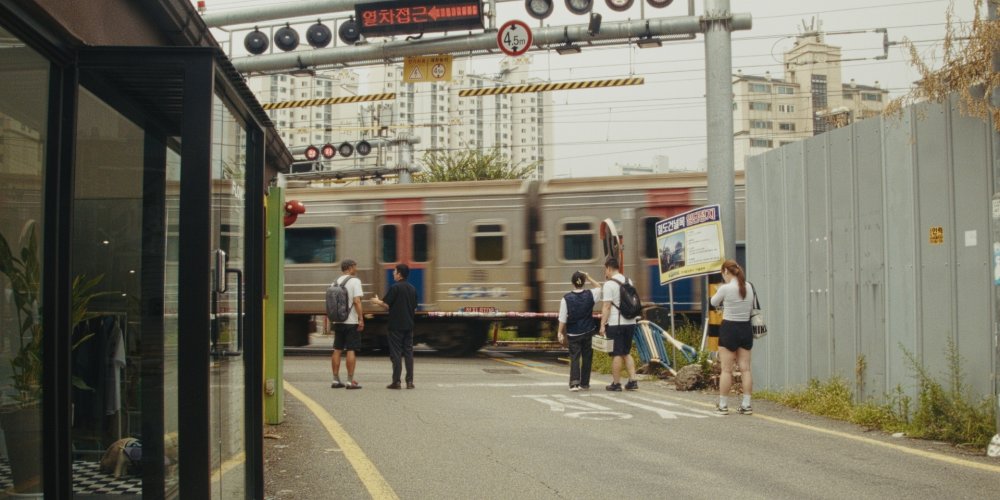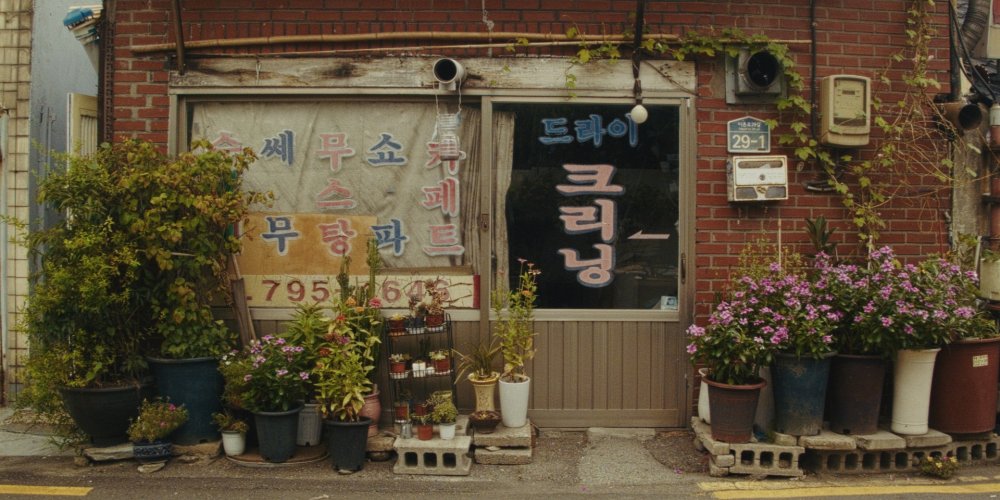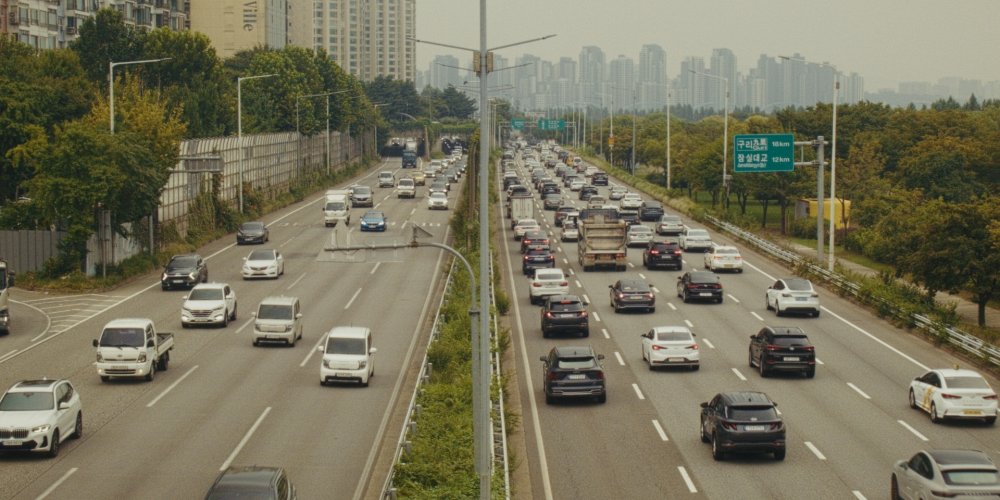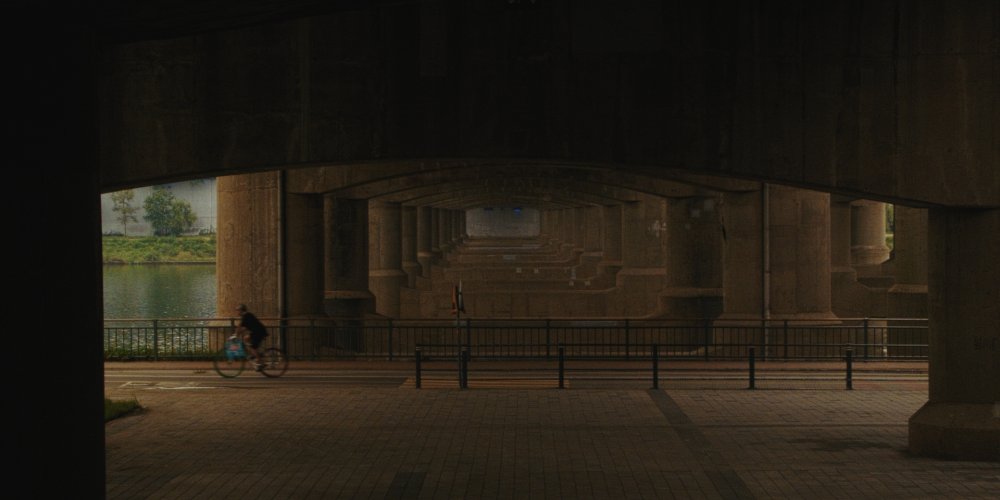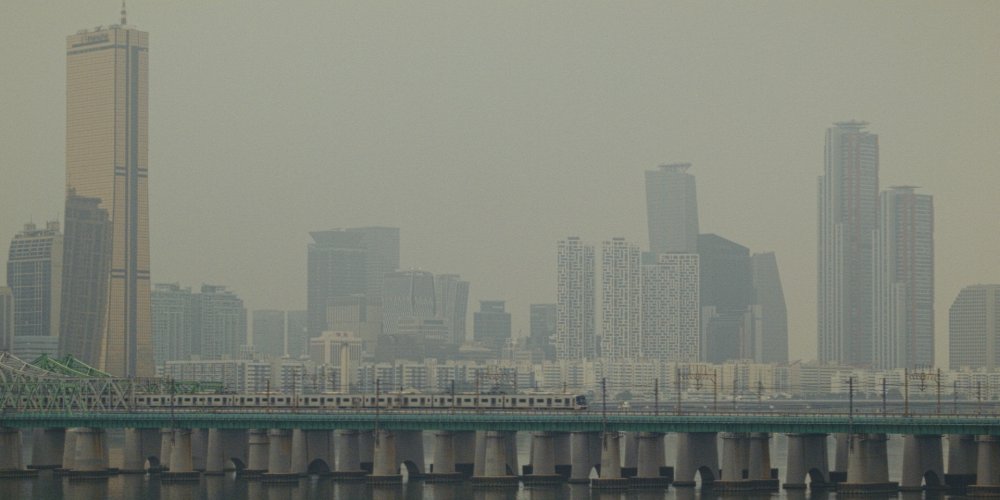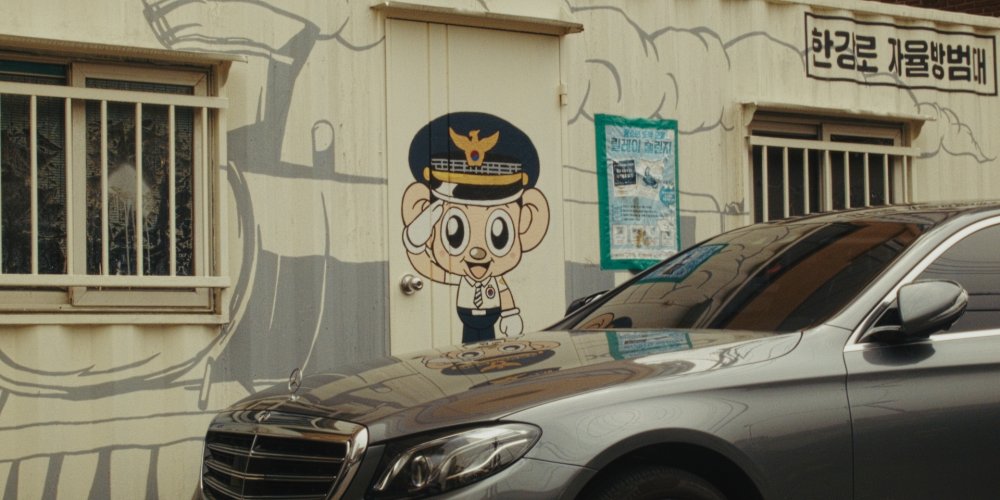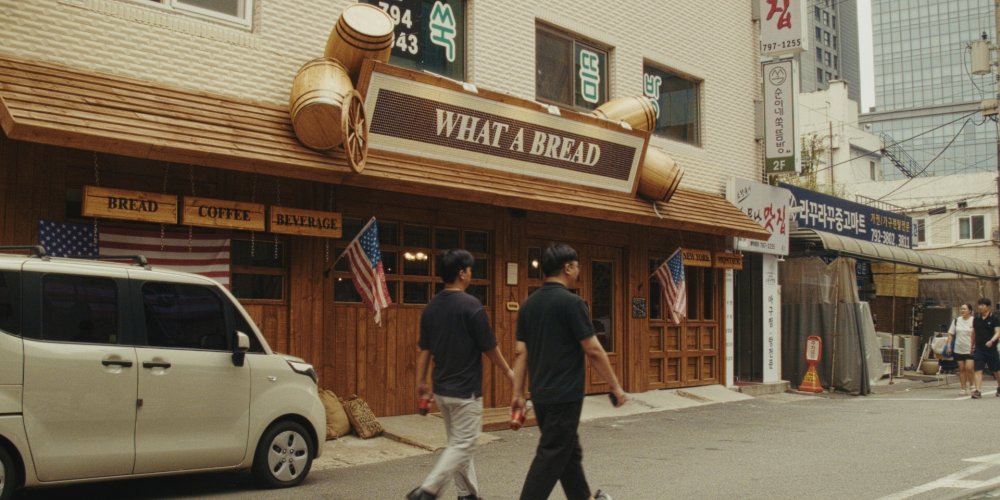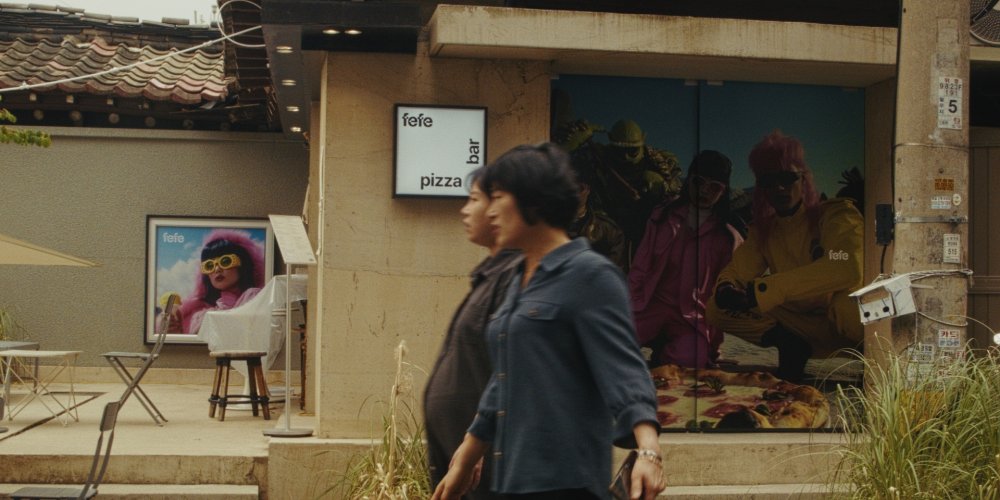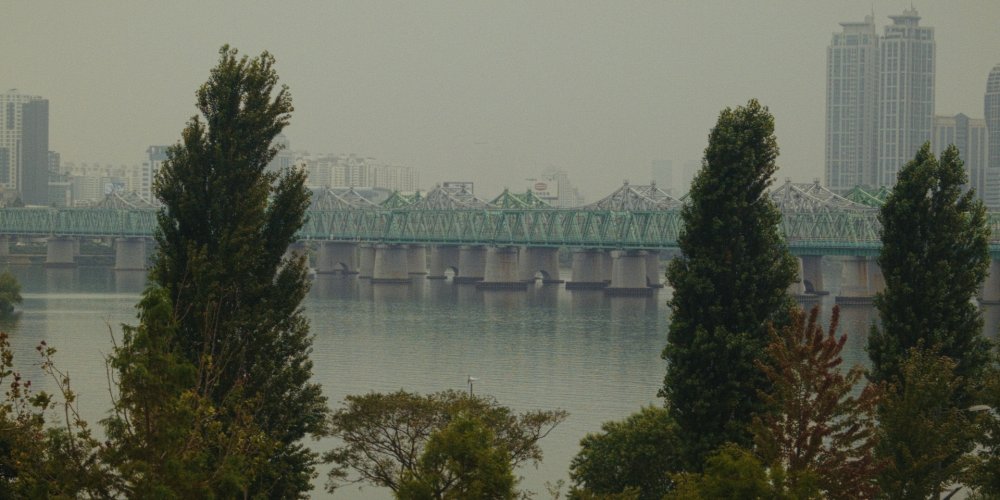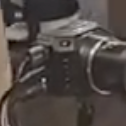-
Posts
7,995 -
Joined
-
Last visited
Content Type
Profiles
Forums
Articles
Everything posted by kye
-
Late last year I saw Goodfellas projected on 35mm film. Absolutely incredible movie. I've been going back and watching more classics, some that I've seen a long time ago and some I've never seen. Lots to watch and enjoy if you zoom out and watch the best from the entire catalogue of cinema history.
-
One topic I find missing is discussion of the creative aspects of our own film-making. Maybe there are too few people shooting things, or too few that are willing/able to share, but to me this is the only topic worth discussing. We all know that the pros can take most equipment and create great images from them, proving that creativity and skills are far more important than equipment, yet the discussions focus on the equipment, the industry politics, the changing media landscape, and everything except what matters - the skills. As much as there are many reasons to hate on other social media platforms, there are many places out there where people post their own work and discuss it on both technical and non-technical levels, creating an opportunity for constructive feedback and creative growth.
-
Understand the genre you are making, what works in the edit and what doesn't. Most discussion of camera features is just noise coming from people that don't know what matters to them and what doesn't.
-
Starting edit for Experiment 2. First step is to apply a basic grade and get a tone for the project. It was hot as hell, humid as hell, and hazy, so the grade is in that general direction. Grade is mostly Film Look Creator and then ARRI709 LUT, with only basic contrast / exposure adjustments. I might try to cool the shadows a bit and balance off some of the brown, but it's a start. I compared it to some 200T scans and it's a lot closer than I thought it would be.
-
Thanks! This video was a proof-of-concept, as when I started I hadn't really used Logic Pro before, had never written a soundtrack / score before, hadn't used any of the dozens of audio plugins I used in Logic either, and didn't really know the best way to integrate Logic with Resolve. Needless to say, I have learned a lot and will do a bunch of things differently on the next one.
-
Also shot in 1080p! A camera that could shoot ISO one billion would be welcome though, as I could set it to 3200 and get cleaner images, then bring them down in post so that night actually looks like night. Thanks! Maybe a little, but much more influenced by Illkoncept, especially his Japan on 16mm Film, things like Man with a Movie Camera (1929) and also from Parts Unknown | Tokyo.
-
Visuals, music and sound design are all original.
-
It looks like the Studio version to me... Here's a grab from the video: The bottom connector on the OG BMMCC is a rectangular connector, but on the Studio version it's a round power connector, which is what this looks like. Considering this event would likely have many cameras all over the place, running back to a central switcher for them to record and switch and stream, the Studio camera is actually an excellent choice.. unlike using it as a stand-alone cinema camera out in the world.
-

Something is nagging at me to go back to smaller sensor
kye replied to Andrew - EOSHD's topic in Cameras
Please don't. This is one of the main challenges for society - the people who care about truth enough to learn anything about the world self-censor when they realise they don't know everything or make mistakes. Meanwhile, the people who don't care about truth and don't know very much about the world continue broadcasting at full volume unabashedly. -
I scored an awesome Black Friday deal on a music effects VST plugin. It was 40% off, but allowed coupons to be applied after that, so some quick googling and I got it down from $199 to $86! I've recently been getting the sound design and music side of things sorted out, so I'll be writing custom music and sound design for my videos as well. Remember - sound is 50% of the movie... at least!
-
Makes sense, and yes, it seems we have similar approaches. Great minds think alike... or fools never differ? If it was the latter then neither of us would ever know, so I'll assume the former 🙂 The crop doesn't really bother me that much, and it's only 10%, but lately I've been focusing on busy cities and the density means that if you go wider than 30mm you've probably got too busy a frame, but in those moments I just grab the shot with my phone and then move on. The 12-35mm on the BMMCC is equivalent to 34-101mm FOV, and while shooting in Seoul I only wanted to go wider on a handful of occasions over the two weeks we were there - it is a very densely packed city! I became aware (and probably hypersensitive) to my clips looking amateurish and started trying to work out what might be the causes. One thing I realised I didn't like the look of was wide-angled lenses, especially if there's any uncontrolled camera movement. Obviously they are used by the pros, but the more I looked into it and did my own tests, the more I realised that wide angled lenses weren't that common. If you look at the old c-mount zoom lenses that were the work-horses on 8mm and 16mm film cameras, the wide end of the zooms for the 8mm cameras was often around 8mm, and the wide end of the zooms for the 16mm cameras was around 17mm, which would make them upwards of 40mm equivalent FOV. You don't see people shooting features on lenses much wider than 35mm, on crop-sensors! This is one of the reasons I moved to zooms, it was so I could try and shoot with longer focal lengths, but not lose any shots that I needed to quickly zoom out for. For me, I'd be an instant birthday present if Panasonic put the GH7 sensor in the GX85 body and gave it 4K V-Log, even if they killed almost all the other headline features of the G9ii/GH7. I know it's crazy, but I want to record 24p with a decent DR, and have files that are a reasonable bitrate and aren't over-processed. Maybe I'm old fashioned.
-
lol about the bus pass.. TBH there are so many models with so many combinations of features I'm surprised that anyone can even be familiar with the equipment they own personally, let alone be walking databases... (this camera has 4K and PDAF, but you can't use PDAF in the 4K mode unless you're wearing a blue hat and the moon is in Pisces...) It's a bummer about not having IBIS as that stabilises roll, where OIS doesn't. IBIS gets a bad rap because YouTubers put an ultra-wide on and then walk-and-talk without looking where they're going. No technology can withstand that kind of abuse! In my situation I use the many-layers approach to stabilisation where: I don't use an ultra-wide I try and hold the camera as steady as I possibly can with three (or two good quality) contact points apart from the occasional follow-shot I am standing stationary with feet planted firmly on the ground and shoulder-width apart I breathe out and hold it out while taking the shot Shot will be static - no pans or tilts or anything OIS is enabled IBIS is enabled In a sense, I've done most of the stabilisation before the light even makes it into the lens. In instances like this the IBIS is only making very small adjustments, but the real reason I want it is that it stabilises roll, which OIS doesn't, and the BMMCC is a long and very thin camera so roll is the movement it's most sensitive to. I'd stabilise in post, but when shooting 180 shutter the roll of the camera is baked into the frames in movement blur, so you can stabilise in post but then you get random bursts of rotational blur, which is less that ideal. For the next trip I'm looking into options for a compact handle that will hopefully reduce this. CineD said they "managed to get 13 stops of DR when the camera is set to 4K/25p" which is quite respectable. Assuming that's SNR=2 then it's more than both the BMMCC and the GH7, so very respectable indeed. Even if it was SNR=1 it's still pretty good. The GH7 had excellent latitude test images, which is really what you actually use DR for, so maybe it'd be closer to being equal. Regardless, and excellent option.
-
My favourite cams right now are either the OG BMMCC or GX85. I would buy a GH7 to replace the BMMCC but it's $$$$$. You could interpret that by saying: Blackmagic and Panasonic are my favourite manufacturers, but that's definitely not right Blackmagic in 2014 and Panasonic in 2016 are my favourite manufacturers Blackmagic and Panasonic suck because the best cameras they released are around a decade old Everyone sucks because the best cameras are around a decade old Camera users suck because they keep wanting things that make it so cameras are either rubbish or are absolutely huge Your choice!
-
I'd assume the sizes they list are likely accurate, but the images aren't 100% reliable as I stumbled upon a combination where two cameras had the same lens on the front (it was the front-on view) and they were slightly different sizes. Not so much as to stop using the tool, but maybe 10% out. Your post actually brings up a point I hadn't explicitly made, but I actually want two cameras (one with an incredible image and one that's very small) and I want them to share the same lens system. I did only mention the combinations of BMMCC with 12-35mm F2.8, GX85 with 14-140mm, and GX85 with 14/2.5, but actually I have more scenarios: Big camera for day and night stuff: BMMCC with 12-35mm F2.8 Small tourist camera during day: GX85 with 14-140mm Small tourist camera at night: GX85 with 12-35mm F2.8 Tiny stealth camera: GX85 with 14/2.5 Extreme low light: GX85 with 7.5/2 + 17/1.4 + 50/1.2 Wide-to-extreme tele scenes from the hotel window during the day: BMMCC with 14-140mm on tripod Wide-to-extreme tele scenes from the hotel window at night: GX85 with 14-140mm on tripod Wide-to-moderate tele scenes from the hotel window at night: GX85 or BMMCC with fast primes As you see, apart from the 14mm F2.5 pancake lens, every lens is used on each camera. This is one of the reasons I tend to keep all my equipment, so many times I've hit a new situation and then reached into the "I'm definitely not ever using this again" box and pulled out just the right tool for the job. I bought the 14mm F2.5 lens in about 2012, and am still using it and it's still one of the best options available. There is very little to replace the GX85 if that's your main camera. There's a reason I'm still using it, despite it being a long-superseded camera with quite aging tech. In my setup it's the "when size is more important than image quality" option. I've mentioned I can get the GX85 to look like the BMMCC, and that's true, but only with a decent amount of work and only when it's operating within its quite narrow sweet spot, and even then the images are only 'passable'. The BMMCC is truly a cinema camera - the fact it's so small is just a coincidence - apart from size it shares nothing with "small cameras", which is just a synonym for horrifically and unnecessarily compromised images.
-
Interesting little camera.. the lens options seem to be quite good too (unlike the FF systems right now). The reviews say it doesn't have IBIS? How is the DR and low-light on it? I couldn't find any DR tests except people parroting the claims from Fuji, and we all now that DR specs are amongst the least trustworthy pieces of information available across all of human history. Yes, MFT prices seem to have risen, I assume it's because they only release large flagship cameras now. Yet another one of the [everyone says X online] -> [manufacturers respond] -> [everyone complains about cameras on offer] pattern of behaviour. I've been thinking about this more since posting and I think I'd actually prefer an MFT solution. I watched some video of the S9 and new 18-40mm f4.5-6.3 kit lens, and even at 18mm F4.5 it still has enough background blur to make me nervous about focusing. [we want crazy-shallow DoF] -> [manufacturers go all-in on larger sensors] -> [now everything is out of focus.. waaaaah] On MFT focusing is still an issue of course, but the issue is typically acquiring focus, not selecting which thing in the frame to focus on. Of all the focusing failures I've seen over the last ~5 years, 90% of them are it successfully focusing on the wrong thing. With MFT I don't have this issue. Encouraging news! I did wonder if it would swing in this direction. When out shooting / touristing I've actually heartily embraced the dorky-dad aesthetic because it encourages locals to give you a bit of leeway if I'm accidentally rude or film them when they'd prefer not to be, and it also separates me from the vacuous volumes of professional narcissists. Before I switched to WFH I shot a number of times in the CBD before work to test a camera, and when you're wearing office attire and shooting with a camera people seem to get very paranoid. I was shooting a composition of people walking through my shot (away from the camera) and one guy stopped right in the middle of the frame and then stood there for ages. At the time I was just annoyed because it ruined my shot. When I looked at the footage later it turned out that he clocked me with a sideways glance, then stopped, pulled out his phone and using the selfie camera to see behind him without turning around he super-zoomed in on me and took lots of photos of me. I'd assume he was a conspiracy nut.
-
You'd have to find a direct comparison to compare the two.. I recently saw an FX30 latitude test and the way the person exposed it for the 'normal' exposure it had almost no stops under but heaps of stops over, so it might be that the different sensors and log profiles are skewing things rather differently. I say this because I've noticed that in high-DR scenes you might want to expose things in a non-normal way, ETTR or ETTL. Everyone knows about ETTR, but I discovered that with the GX85 you want to ETTL because what's clipped is clipped but you can bring up the image 1-2 stops in post, so if there are higher-DR scenes then you'd ETTL in order to avoid clipping things too hard.
-
Absolutely. But, this is where things are highly contextual. I've written about this before, but the summary was: Priority 1: Get the shot - You can't use the shots you didn't get. Priority 2: Get shots in the best way - Shots that are in focus, aren't shaky, have usable composition, don't have nervous-looking subjects or people in the background are staring at the camera, etc. Priority 4: Get the nicest image quality - Insert all the normal camera stuff here... DR, colour science, etc. No, I didn't mis-number this, priority 4 is so far away from priority 1 & 2 that there is no Priority 3. Now to context. When I came up with that I was shooting my family and friends. The most frequent Priority 1 challenge was security guards wouldn't let you shoot in museums, art galleries, shopping centres, some zoos, and even in parks if you had a "professional looking" camera, and the most frequent Priority 2 challenges were that I couldn't frame up fast enough to catch the moment, shots weren't in focus, and were too shaky. The only times that Priority 4 challenges came up was shooting shots where they weren't moving, or random shots without them in it, like landscapes and street scenes of markets etc. I also spent a lot of time analysing professional and award-winning edits of similar materials (travel / travel food shows such as Parts Unknown, Chefs Table, Street Food, as well as YT) and I discovered that in the professional stuff: the quality of their shots is solid but not breathtaking the quantity of shots was stunning - they're shooting vast quantities of material (one 45 minute episode had 2000 cuts!) the magic came from the structure, the interweaving of images combined with music and sound design, and the layering of interviews with voice-over narration I used to shoot with the GH5 and manual primes as my main camera, but recently realised that the GX85 with AF zooms was the faster way to go, because it was smaller and less 'pro' looking so got into more places and when I was using it the AF and zooms made far more shots in focus, I got far more shots because I was quick enough, and lots less shots had random people in the background staring. The GX85 became my main camera for this reason. Then the kids moved out and so the previous trip (which inspired this post) was just about the location, so I knew that Priority 1 and 2 would be far easier to satisfy. In South Korea many of the interesting places are public spaces (street malls and markets, not big shopping centres - although they have those too) so no security guards to worry about, and because I can mostly take all the time I need to frame up and expose and focus, mostly it came down to image quality. However, you'll notice my setup wasn't only the BMMCC. It was the BMMCC and GX85 for a reason. My thinking on the previous trips and for my next one is that there are four types of places where I might shoot: Tourist places like lookouts etc, where everyone expects people to be filming Use the big camera Public places that are busy but not touristy, where people wouldn't be surprised to see someone filming Take both setups and try the big camera but switch if you have to Public places that people wouldn't expect to see someone shooting Take the small camera, try with a zoom but swap to pancake lens if required, or use phone Places where shooting wouldn't be expected and maybe not welcomed Take the small camera and pancake lens in a pocket and keep it in the pocket when not taking a shot, but potentially grab quick shots with phone instead In terms of the logistics, the BMMCC requires a backpack anyway because the rig is too large for a sling bag, so any time I take it anywhere I take the GX85, zoom, and pancake lens as well. The GX85 and zoom fit into a sling bag, and the other zoom and pancake lens also fit in there, so I take those too. This means I can always "downsize" the rig I'm shooting with, depending on the situation. This is the setup I plan to take on the next one. There's no way I'd just take the "big camera", regardless of what it was (GH5, GH7, BMMCC, Komodo, etc).
-
Update.. I've booked another trip for next year, and have been doing the post-trip analysis and working out what I'll do for next time. We all know the BMMCC sits in a very narrow niche of size, performance, and features, so I won't rehash that, but I figured my analysis on alternatives might be useful to anyone else still interested in this camera. Options Keep the same setup as I used previously Big camera: BMMCC with 12-35mm F2.8 Small tourist camera: GX85 with 14-140mm Tiny stealth camera: GX85 with 14/2.5 Extreme low light: GX85 with 7.5/2 + 17/1.4 + 50/1.2 Buy: nothing Pros: no cost, known setup Cons: no AF - manually focusing took time but wasn't a huge deal some moire - only a few shots had moire dim monitor - only a problem when in bright sunlight limited low-light when hand-holding - native ISO with 12-35/2.8 lens is 'enough' for ok lit places but not for dim places, and my fast primes don't have OIS so aren't usable with a tiny hand-held rig limited focal range when on tripod in low-light - I like to shoot little scenes at night from out the hotel window and the 50mm is the longest fast lens roll not stabilised - OIS can't stabilise roll so footage does have roll jitters from hand-holding in a smallish percentage of the shots Same setup but minor upgrades Buy a brighter monitor to get visible screen in bright conditions Buy OLPF to ensure no moire Buy 85mm F1.4 to get fast tele for low-light Use my OG BMPCC As cool as the OG BMPCC is, is still suffers from most of the issues of the BMMCC as well as introducing new ones. The monitor doesn't articulate at all, is useless in almost all daylight situations, and is the wrong polarisation for my sunglasses so is black, so I'd still need an external monitor and therefore I'd need a rig for it to protect the notoriously fragile tiny-HDMI connector on the side. It also needs an external power solution. All to give me one of the slowest AF mechanisms ever invented. Use the GX85 only This really simplifies the setup with one camera, but severely limits the dynamic range. This is important for any time the sun is low, which is a lot when you're on holiday, but is also (surprisingly) more of a problem at night when you want to be able to see the people walking in the streets but don't want to blow out the people inside the shops and bars and restaurants eating etc. I've done a bunch of side-by-side tests recently and have (finally) managed to get the GX85 files to have some of the mojo of the BMMCC, so I'm less obsessed with the filmic and organic look of the BMMCC that I was. It's really about DR, which just isn't enough to consider this a good alternative to the BMMCC, and is a recurring weakness for other options. Use my GH5 as the main camera DR is still poor compared to BMMCC (almost two stops less?) Flippy screen is a PITA because to tilt it (I like to shoot from the hip and high angles) you have to flip it out to the side first AF is solved (I only use AF-S so no worries there) Moire is solved Dim monitor is solved Low-light when hand-holding is solved - I can use the 12-35/2.8 with a higher ISO or use the primes with IBIS Focal range when on tripod in low-light is partly solved - I can use the 14-140mm F3.5-5.6 with higher ISOs Roll stabilisation is also solved by IBIS Buy GH5ii Same as above, but DR is only around one stop less and instead of being free it's AUD1500. Not worth it compared to other options. Buy BMMSC 4K G2 Same as current BMMCC setup, but.. No AF without having that stupid handle that's larger than the entire rest of the rig Moire is fixed Dim monitor still an issue Low-light when hand-holding is fixed due to dual-ISO (400 and 3200) which means 12-35mm f2.8 lens on this becomes equivalent of a T1.4 lens on BMMCC Focal range when on tripod in low-light is also partially fixed as 14-140mm F3.5-5.6 becomes equivalent to T1.8-2.8 on BMMCC Roll still not stabilised Additional issues including: Large file sizes from 4K BRAW, must buy SSD, must buy mount and cable protectors for SSD, cost around AUD1500 plus SSD plus cage Buy GH6 DR is better to BMMCC AF is fixed Moire is fixed Dim monitor is fixed Low-light when hand-holding is fixed - native ISO for V-Log in DR Boost mode is ISO 2000(!) Focal range when on tripod in low-light is also fixed by high native ISO 2000 so the 14-140mm lens is good enough Low light becomes so good that I don't even need to take the fast primes on the trip (I'd still take the 14/2.5 pancake lens for use with the GX85) Roll is stabilised High-DR scenes had streaking issues that I'm pretty sure I'd encounter, considering I am shooting scenes where I am simultaneously clipping the white and black points of the BMMCC which has 11.2/12.5 stops of DR AUD2500+(!!) Buy GH7 This fixes all the issues with the BMMCC. DR is much better than the BMMCC AF is PDAF Moire is fixed Dim monitor is fixed Low-light when hand-holding and focal range when on tripod in low-light are both fixed, and I don't need to bring the fast primes Roll is stabilised by IBIS Also doesn't have the issues that other options have: Screen tilts as well as flips Can record internal Prores (not Prores RAW, although it does that too) at various resolutions (down to 1080p) and in various flavours No streaking or image issues The only downside is the cost - AUD3400 or so currently. Non-MFT cameras This is pretty simple, there are no good options currently available that are equivalent prices. Any non-MFT option currently suffers from at least one of the following issues: Variable aperture 10x zoom lens options don't exist or are large or heavy or both Faster 3x zoom lenses are typically large / heavy I have to buy a new body as well as at least two new lenses, which simply can't compete with the price of just an MFT body I also suck at selling things, so that's a whole hurdle I'd rather not have to deal with. I also seem to keep finding uses for old gear, so there's a reluctance there too. Conclusion My conclusions were pretty simple: The reduction in DR from the free options (using the GX85 or GH5 only) weren't worth the benefits, especially as things like the dim screen / moire / roll shake weren't bad enough in practice The cost of the GH5ii, BMMSC 4K G2 (plus SSD), and GH6 weren't worth it considering how many issues they didn't solve (or new issues they introduced) Therefore the GH7 was the only worthwhile option currently around So, my decision is that unless I'm buying a GH7, I shouldn't invest in anything that doesn't align with that direction. Considering I don't want to casually spend AUD3500 right now, this means I'll be keeping the current setup, perhaps with a few minor things if they're not that expensive. The advantage of this do-almost-nothing approach is that when I get around to looking to upgrade, I won't have locked myself further into the MFT ecosystem than I am now, so if I decide to change systems later on I still can. I also looked at the RED Komodo and found even a minimal rig was about 3x the weight of the BMMCC rig, so would be too heavy even if I could afford it. So that eliminates all cinema cameras too, making things like buying a fancy external monitor a waste when my next camera is likely a MILC. Hope this is useful 🙂
-
Yep, P4K over the M4K, the only problem is that it's 112% wider, 23% deeper, 46% taller, and 140% heavier... and if you do a volume comparison, it's literally 3.8x larger. This doesn't count things like the battery jutting out the back of the M2K and the monitor you'll need for the M2K (but might also want for the P2K as the screen doesn't articulate), but still, you're going from one of the smallest cameras around to one of the largest! The camera market for cinema cameras sure is strange at this lowest end of size and capabilities. I did a big comparison trying to work out what alternatives there might be for the BMMCC and one thing that I worked out was that a RED Komodo setup was at least three times the weight of a BMMCC rig.
-
The other major changes that I noted with the BMMSC4KG2 were: B-RAW only No internal recording - SSD or external recorder required (and appropriate rigging) There's some strange things about the monitor setup IIRC - something like the menu options only appear on the 1080p HDMI output and the 4K SDI output can only output 10-bit and not RAW so depending on how you use it you might need two monitors, or to swap between the inputs on the one monitor but only be able to see a clean feed If you want to control it via USB (like if you have the handle accessory) and also want to record to SSD then I think it works but you might need a USB hub, and if so not sure if it needs power Compared to the BMMCC it's actually very different and has a bunch of strange quirks. It really is a studio camera designed to work while streaming and being remote-controlled. The fact it can record to a USB SSD and has the minimum number of buttons a camera could possibly have make it possible to use as a cinema camera, but it's sure a hell of a long way short of being nice to use as a cinema camera. The way I think of it is that the BMMCC is fiddly and annoying in many ways, and in those ways this one is worse!
-
Yeah, cheaper, but not that much cheaper! I guess my challenge with these is that they're both around a third of the price of the BM Micro Studio camera, which apart from coming with an OLPF installed, also provides: 4K sensor that is larger (MFT vs S16) Will have greater DR than the 1080p one on a 1080p timeline (because new one will be downsampled to 1080p from 4K) Dual ISO More bitrate options - from 3:1 to 12:1 Plus, it's a brand-new camera not one that's potentially almost a decade old. The OG BMMCC seems pretty well made, but electronics don't have an infinite shelf life.
-
Thanks, this is interesting info. I haven't looked into them yet, except to see the price and have my eyes go really wide! I didn't know they're also an IR/UV cut filter, which is useful although not much of a deal for me as mine is just joined at the hip with my vND filter. Also interesting to note with minimal loss of resolution, this is perhaps the greatest weakness of the BMMCC I think - imagine the image if it was a 2.5K sensor. @PannySVHS do you know what version you have? I did get moire on my trip, but it was only on a handful of shots IIRC, so although a problem, a pretty minor one, and for the kind of stuff I'm shooting which is atmospheric shots and nothing in-particular, if I miss a shot it isn't critical.
-
Great stuff! Lots of little interesting stuff to notice in there, like you making sure people are clapping in time to your soundtrack, etc. Some fun characters too - there's nothing like a grumpy person staring down the barrel of the camera lens! Those Sony 6000 series cameras can make some great images. I was considering the A6300 at one point, but an IBIS bug put me off at the time. I think the major issue for those cameras was that getting good colour out of them required more skill than people had at the time. Now there's more support for folks in terms of tools like colour management, the film emulation plugins, and more knowledge of colour grading techniques, so it's much easier to make the most of the files. Amusing about your son - kids are funny sometimes. Just as I thought I'd figured mine out (even just partially) they'd change and go through a new stage and I'd go back to being completely confused again!
-
I can verify I bought my BMMCC + rig from @mercer and would definitely recommend buying from him 🙂 I'm contemplating getting an OLPF for my BMMCC but you have mentioned this before and it stuck in my mind as a reason to avoid it. Did you try compensating with a bit of post-sharpening? It's a Smallrig one. I can't see it on their website now, so I assume it's superseded, but it just tilts forwards/backwards and attaches with 1/4-20 bolts to the camera and monitor. Shouldn't be too hard to find a reasonable one that fits what you want. If I take the BMMCC with me on my next trip in April next year then I'm contemplating a new monitor that's a lot brighter. I did a side-by-side with the BMMCC and GX85 on the beach a few weeks ago and literally couldn't see the Ikan at all, but the GX85 screen was totally usable.
-
Another thought, I really think it's down to the IBIS implementation. The GH5 has two IBIS modes, one that smoothes motion, and the other eliminates it creating a stationary frame. The normal smoothing one is how you describe, but it's the other one that's of interest. If you put it in that tripod mode, but then pan the camera, it keeps a stationary frame until you've moved it too far and it realises it has to 'follow' you, and if you keep panning you get the smoothest pans I've ever seen without sticks. The level of stabilisation is incredible. When you're doing it the feeling is a cross between pulling the frame through treacle and one of those time-warp things where reality is delayed (because it moves a second or two after you start, and then it keeps moving a bit after you stop again). I really miss that mode on the GX85, as it only has a normal smoothing mode, and if you hold it steady the frame sort of floats around randomly because it didn't completely eliminate all the motion. Interestingly, the OIS from the 12-35mm F2.8 on the OG BMPCC and BMMCC (which don't have IBIS) tries to keep a much more stable frame - if you hold it steady then it will have a much more 'locked off' shot with far less drift than the 'normal' modes from the Panny cameras. I haven't compared it between cameras, so it might be the lens, or might be the camera doing this. I think there could be a lot of benefit if they included several levels of smoothing on the IBIS mechanisms. Light, Medium, Heavy, and Tripod modes would be very useful I think.



